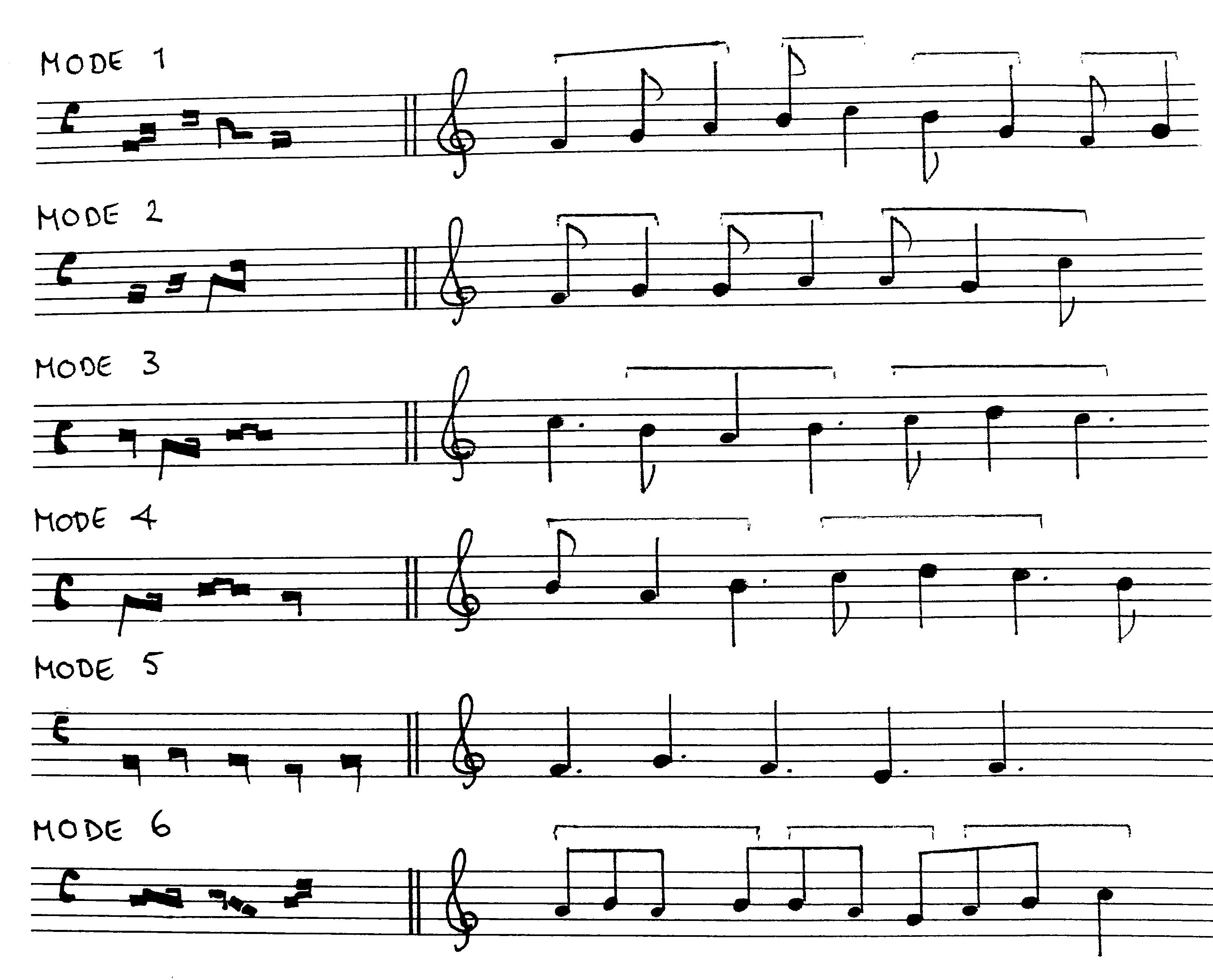

You can also try simply searching for "heterophony" at YouTube or other sites with large collections of recordings. There is some heterophony (with some instruments playing more ornaments than others) in "Donulmez Aksamin" and in "Urfaliyim Ezelden" on the Turkish Music page.Polyphony is rare in contemporary popular styles, but examples of counterpoint can be found, including the refrain of the Beach Boys' "Good Vibrations," the second through fourth verses of Simon and Garfunkel's "Scarborough Fair/Canticle," the final refrain of Jason Mraz's "I'm Yours," and the horn counterpoint in Ghost of a Saber Tooth Tiger's "Lavender Road.".The first movement of Holst's 1st Suite for Military Band.The "One Day More" chorus from the musical "Les Miserables".The trio strain of Sousa's "Stars and Stripes Forever", with the famous piccolo countermelody.The final "Amen" chorus of Handel's "Messiah".The opening section of the "Overture" Of Handel's "Messiah" (The second section of the overture is polyphonic).Most popular music genres strongly favor homophonic textures, whether featuring a solo singer, rapper, guitar solo, or several vocalists singing in harmony.1 ("Granada") of Albeniz' Suite Espanola for guitar The "March of the Toreadors" from Bizet's Carmen.The "graduation march" section of Edward Elgar's "Pomp and Circumstance No.A classic Scott Joplin rag such as "Maple Leaf Rag" or "The Entertainer".Monophony is very unusual in contemporary popular genres, but can be heard in Queen's "We Will Rock You.".Apparently Handel associates monophony with "walking in darkness"! Long sections of "The People that Walked in Darkness" aria in Handel's "Messiah" are monophonic (the instruments are playing the same line as the voice).Here is an example from James Romig's Sonnet 2, played by John McMurtery. Any orchestral woodwind or brass instrument (flute, clarinet, trumpet, trombone, etc.) performing alone.A single bagpipes or accordion player playing a melody with drones or chords.A small jazz combo with a bass, a piano, and a drum set providing the "rhythm" background for a trumpet improvising a solo.A singer accompanied by a guitar picking or strumming chords.Most traditional Protestant hymns and most "barbershop quartet" music is in this category.

Choral music in which the parts have mostly the same rhythms at the same time is homophonic.are not independent) or because their main purpose is to fill in the chords or harmony (i.e. But when they are sung or played with the melody, it is clear that they are not independent melodic parts, either because they have the same rhythm as the melody (i.e. They may follow many of the rules of well-written counterpoint, and they can sound quite different from the melody and be interesting to listen to by themselves.

In most well-written homophony, the parts that are not melody may still have a lot of melodic interest. All other parts provide accompaniment or fill in the chords. Homophony has one clearly melodic line it's the line that naturally draws your attention. More informally, people who are describing homophonic music may mention chords, accompaniment, harmony or harmonies. Homophonic music can also be called homophony.

Thanks again for joining us here at Living Pianos.\( \newcommand\) Virtually all music we listen to today is polyphonic. Polyphony simply refers to having more than one note at a time. Interweaving of musical lines is referred to as counterpoint. The MPE protocol can be tough to wrap your head around, so let’s look at it in pieces: The fundamental feature that. MPE uses MIDI data as its core language, but completely changes its approach to sending that data. There was only one line of music at a time and this is the only written music we have (and the very first written music) from the 9th and 10th centuries.Įventually music evolved into something called organum, which had two lines – typically in parallel 4ths that would embellish the melody.Īs music continued to develop more complexity, we began to have many lines of music that would play simultaneously. MPE stands for MIDI Polyphonic Expression, but has also been referred to as Multidimensional Polyphonic Expression. This music was simply liturgical text that was sung with embellishments. There was a time when the only written music was monophonic, which means “one note at a time.” The first written music was called Gregorian Chant (or “plainsong”). So, what does this term mean and why is it important? Polyphony is intrinsic to almost all the music we listen to today but it wasn’t always that way. You may have heard the term polyphony before and might have wondered what it meant.


 0 kommentar(er)
0 kommentar(er)
